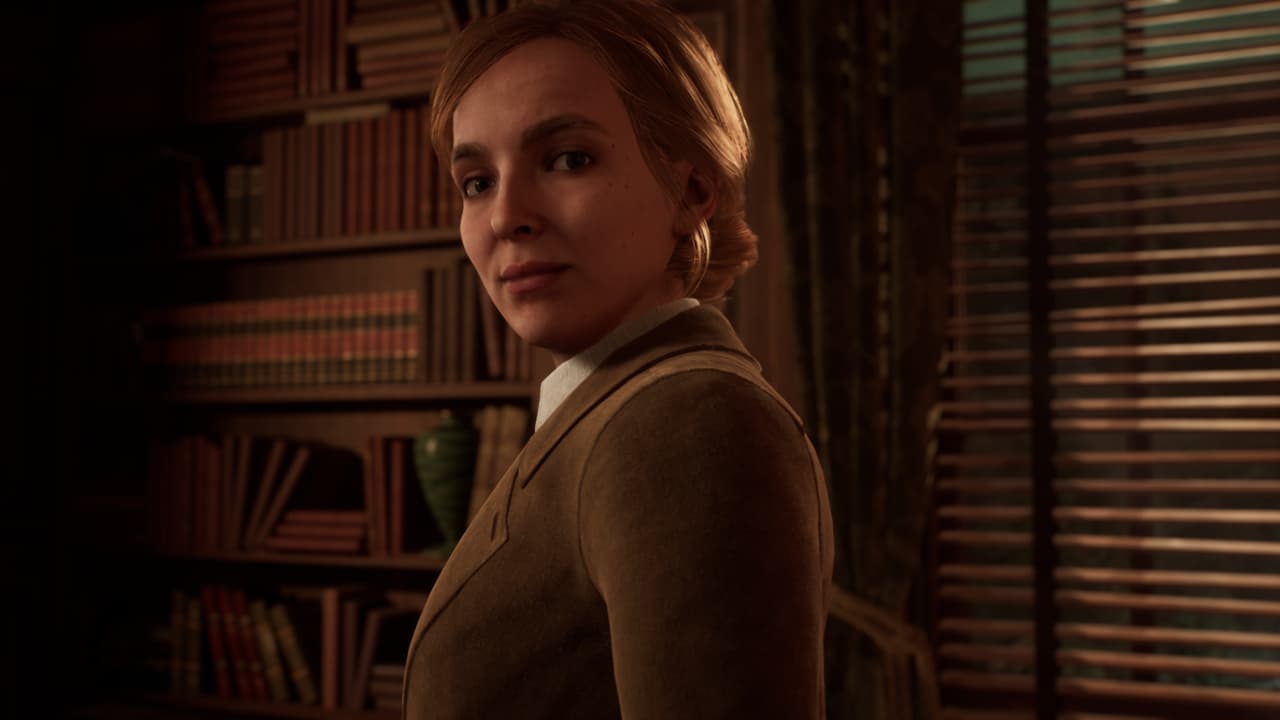Video Gamer is reader-supported. When you buy through links on our site, we may earn an affiliate commission. Prices subject to change. Learn more
When Alone in the Dark hit store shelves in 1992, it birthed an entirely new genre – survival horror. Peddling a Lovecraft-inspired trudge through a rudimentary pre-rendered haunted house, this trailblazer set the foundations for genre-defining followers like the gun-toting Chris Redfield, the reality-blurring antics of a certain Mr. Wake, and many more besides.
Though Alone in the Dark wasn’t howling for a remake, Pieces Interactive’s ground-up reimagining is far more than the retelling of a classic, not least because of some narrative liberties and the shrewd switch from the obtuse top-down perspective of the original to third-person action. Much in the same way that Final Fantasy 7’s three-part, and still ongoing, remake elevates the original, 2024’s Alone in the Dark is a perfectly-dosed slice of history respectfully adapted for modern audiences, for those too young at the time or yet to make their terrestrial debut, and, of course, the odd grey-haired nostalgia hunter. And, in many ways, that’s the best way to view and appreciate Alone in the Dark – as a brand-new game. 1992 was a long time ago, after all.

You play as dual protagonists Detective Edward Carnby and Emily Hartwood, voiced by David Harbour and Jodie Comer, respectively. Tasked with tracking down Jeremy Hartwood, Emily’s flighty uncle, you’ll explore Derceto, a grand manor for the mentally fatigued set into the sodden soils near New Orleans. Carnby leans into the gruff P.I. boilerplate without ever fully succumbing to the stereotype, a refreshing twist that makes Harbour’s poised voice work shine. Emily is an equally compelling protagonist, spurred on by a more personal attachment to the task at hand. While the overarching narrative is identical, choosing to play as Edward or Emily tenders two distinctive perspectives, fleshed out by alternative dialogue, NPC interactions, and story beats that make two playthroughs well worth the player’s time.
The star of the show is, however, Derceto itself. It’s an unsettling place tainted by questionable psychiatry, voodoo, the hefty legacy of slavery, and the bayou’s swampy French flavour. Bleating, enthusiastic announcers crackle out of vacuum tube radios, jazzy flourishes echo through smoke-filled parlours, and drooping willows sway to the rhythm of humid gusts. It’s a vibe, as Resident Evil pivots L.A. Noire, instilling a false sense of security – the low-lit warmth of the 1920s. But, Derceto is anything but safe, a heaving tangle of supernatural oddities, from its elusive lodgers and steeped history to its bolted doors and crumbling ceilings.

In the manor’s web of eerie rooms, conservatories, and obligatory cellars, you’ll stumble across puzzles to test your wits. Well-designed and ever-satisfying, solving them requires scouring your surroundings for solutions, sifting through lavishly prosaic notes for clues, and cracking arcane cyphers. A recurring favourite is keying the correct numbers into a talisman that ports you to brilliantly realised memories in far-flung locals as varied as a rotting sunken temple to the Arctic circle and even soggy World War 1 trenches. These often encompass Alone in the Dark’s most chilling moments, juggling suggestive, foreboding horror with combat and chase sequences paced and seasoned to perfection, including a rush through a multi-floored, dusty library – the most convincing facsimile of genuine fear I’ve experienced in a game for some time.
Equipped with pistols, then later a shotgun and Tommy gun along with pickaxes, shovels, and hatchets you’ll find conveniently leaning on crates and crumbling shacks, Edward and Emily are skilled fighters but vulnerable to just a few swipes from the squirming, limby nightmares prowling Decerto and beyond. Mistakes are billed in game-over screens, hammering home a palpable sense of bubbling unease about peeking behind that next corner. Fortunately, whether it’s screeching bullets or a melee crunch, the combat is weighty and satisfying, and viable stealth gives options to how you tackle enemy encounters.

When you emerge from a memory back at Derceto, you’re no longer treading the same ground. Unexplored rooms are now accessible. You’ll bump into new inhabitants to glean new clues. Freshly blocked paths require lateral thinking to get where you want to go. There’s a real pleasure in the free-form, non-linear approach to exploring what is, in video game terms, a claustrophobic but ever-morphing setting. It’s a satisfying counter to the tight, linear memory sections and returning to Derceto to play the sleuth to find keys, fix boilers, or open doors never gets dull.
The odd environmental collision that ices Edward or Emily in place for a few seconds and chapter objectives occasionally vanishing like the ethereal spectres that inhabit Decerto aren’t enough to spoil the jittery fun. Nor is the game’s AA graphical charm. The biggest complaint that you can wring out of Alone in the Dark is that after playing through as both characters, a reflexive funk sets in at having to leave this shifting manor. It’s all over far too quickly in under 15 hours, but maybe in an age where many games skid past the hundred-hour mark, a pithy experience isn’t all bad. Leave them wanting more, as it’s often said.

Alone in the Dark is a considerate homage to the original, weaving together nifty puzzles, edge-of-your-sofa combat, and clever scares. In a rather poetic role reversal, it borrows elements from the very games it inspired – those modern features and trimmings that now define the genre. A homecoming then for the pioneer that started it all. It’s one that’s well worth sampling for established fans looking for the definitive way to play a classic but also for newcomers after a disconcerting sleuthy fright fest.
Reviewed on PS5. Code provided by the publisher.

